products categories
- Battery Production Equipment Line
- Battery Lab Pilot Equipment Line
- Lithium Battery Pack Assembly Line
- Solid State Battery Assembly Line
- Sodium Ion Battery Production Line
- Supercapacitor Assembly Line
- Lithium Ion Battery Recycling Plant
- Dry Electrode Preparation Solution
- Perovskite Based Solar Cell Lab Line
- Li ion Battery Materials
- Cathode Active Materials
- Anode Active Materials
- Customized Battery Electrode
- Coin Cell Parts
- Lithium Chip
- Cylindrical Cell Parts
- Battery Current Collectors
- Battery Conductive Materials
- Electrolyte
- Metal Mesh
- Battery Binder
- Separator and Tape
- Aluminum Laminate Film
- Nickel Strip
- Battery Tabs
- Graphene Materials
- Nickel Felt
- Titanium Fiber Felt
- Battery
- Battery Pack Machine & Compoments
- Battery Pack Compoments
- Turnkey Solutions Battery Pack Assembly Line
- Cell Sorter
- Battery Pack Spot Welder
- Laser Welder
- Battery Charging Discharging Tester
- Battery Pack Aging Machine
- Battery Pack Comprehensive Tester
- CCD Visual Inspector
- Battery Pape Sticking Machine
- BMS Testing Machine
- Al Wire Bonding Machine
- Lithium Battery Machine
- Battery Tester & Analyzer
- Battery Safety Tester
- Material Characterization Tester
- Rolling Press Machine
- Spot Welding Machine
- Vacuum Mixer Machine
- Crimping/Disassembling Machine
- Vacuum Sealing Machine
- Electrolyte Filling
- Stacking/Winding Machine
- Electrode Cutter/Slitter
- Pouch Forming Machine
- NMP Solvent Treatment System
- Lithium Battery Production Plant
- Vacuum Glove Box
- Furnaces
- Coaters
- PVD Coater
- Laboratory Press Machine
- Large Press Machine
- Planetary Centrifugal Mixer
- Ball Mill
- Laboratory Machine
- Cutting Machine
- Metal Foam
contact us
- If you have questions, please contact us, all questions will be answered
- WhatsApp : +86 18659217588
- Email : David@tmaxcn.com
- Email : Davidtmaxcn@gmail.com
- Add : No. 39, Xinchang Road, Xinyang, Haicang Dist., Xiamen, Fujian, China (Mainland)
-
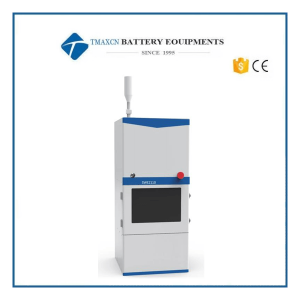 Lab Lithium-ion Battery In-Situ Cell Swelling Tester for Pouch Battery Cell Testing
Lab Lithium-ion Battery In-Situ Cell Swelling Tester for Pouch Battery Cell Testing
Lab Lithium-ion Battery In-Situ Cell Swelling Tester for Pouch Battery Cell Testing Swelling behavior of the lithium ion battery(LIB) During the charging and discharging process of lithium—ion batteries, as lithium ions are inserted and extracted in the negative electrode, the cells will expand and contract; Ideally, the insertion and extraction of lithium ions are reversible, but in the actual cycle process, there will always be a part of lithium that cannot be extracted from the negative electrode or deposits on the surface of the anode as an insoluble by-product during the cycle, resulting in irreversible swelling of the battery cell Or other more serious consequences, such as the deformation of the battery cell, the fragmentation of material particles, the rupture of the SEI film, and the consumption of electrolyte. The swelling behavior of the battery has become an important indicator for evaluating the reliability of the battery. During the production process, the particle size, binder and pole piece structure of the negative electrode material must be optimized in advance. The theoretical swelling ratio of next—generation high-energy density anode materials, such as silicon and lithium metal, is much greater than that of graphite anode materials. Therefore, accurate and effective evaluation of the swelling behavior of the battery cell can effectively guide the installation design of the battery cell module to ensure safety under the premise of improving module space utilization; On the other hand, SWE can accurately determine the battery cell' s lithium SOC window under different magnifications, fast charging technology for the battery cell, helping cell design engineers to develop fast charging technology and optimize charging strategies. Swelling behavior of the lithium ion battery(LIB) Disassemble different—condition cells and measure the thickness of the cell and electrodes by micrometer; Li plating window Judgment: Through the disassembly of full charged cell to judge the lithium precipitation on electrode surface by visual inspection; Destructive Test : It is a cell consuming destructive test, and there is a higher safety risk and higher operation cost because the dry environment and professional people are required; Non-in site Test: Only the thickness data on several specific states can be acquired, the swelling behavior of cells cannot be described systemically; Big Deviation for Li plating window assessment: Not every lithium plating SOC and potential in different rate can be quantified. *Part of the data comes from the partners, and the copyright belongs to the relevant parties. It can not be reproduced or used without consent. Swelling behavior of the lithium ion battery(LIB) In situ swelling analysis system: with the highly stable and reliable automatic platform, equipped with high precision of thickness measuring sensor and mechanical sensor, it can achieve long-term stability and accurate detection of cell thickness and swelling force to realize performance evaluation under different conditions. Multi-function test modes : the constant pressure and constant gap test modes can be realized for the cell, and the performance of the cell under diflerent stress conditions can be evaluated. High precision control : the deformation of ~70um will be generated by the constant gap test of the cell by the traditional clamp, which leads to the inaccurate swelling force test. The SWE in-situ swelling analysis system can control the gap change within ~lum by active modulation, and get the accurate swelling force change of the cell during the test. Software Applications *Developed with CATL the top power battery company and authorized exclusively for the patent. Application cases-material evaluations 1.Swelling behavior analysis of different anode materials 2.Swelling behavior analysis of different binder *Two types of anode material batteries with the same design and capacity, of which the full charge swelling and irreversible swelling thickness of B are significantly greater than that of At which can be used to screen and evaluate battery anode materials with swelling requirements; *The swelling difference of three different anode material cells can be used to study the in-situ swelling process mechanism of anode materials during charge and discharge. 2.Swelling behavior analysis of different binder Comparison of the swelling of four different Binder material batteries, the level of irreversible swelling is the same, the main difference lies in the single-cycle full-charge swelling thickness, Binder C has the best swelling suppression effect and can be used for evaluation and screening of different Binder materials. Li plating analyze 1.Non-destructive Li plating window judgment Compared with normal li-insertion curve, the Li plating swelling curve reaches inflection point when reaching li plating voltage, accordingly accurate li plating rate, voltage and S O C window will be acquired. 2.Application of step charge Quantitative lithium analysis voltage and SOC window of a certain lithium analysis rate can effectively guide the cascade fast charging technology, and realize safe fast charging through the charging scheme. Application of cell structure *Two models are used to evaluate the swelling of different anode cells, and the comparison law is basically the same as A> C> B. *Because the two sides of the winding are bound, the crimping stress caused by the lateral swelling accumulates in the middle, so that the thickness increases with the cycle, and the four sides of the lamination are not bound, so the crimp stress of the group A pole piece with larger lateral swelling is released during the cycle, and the thickness decreases with the cycle. (Single-sided anode). *In-situ Swelling can be used to deeply analyze the influence of process on stress and strain. Process conditions 1.Different pressure conditions NCM523/graphite battery (3446106, theoretical capacity 2400mAh) Different constant pressure conditions (50N/500N/1000N) Properly increasing the pressure can reduce the irreversible swelling ratio of the battery; During the charging process, the two inflection points of the swelling curve correspond to the two peaks of the differential capacity curve, indicating that the swelling of the battery is related to the phase transition of deintercalation of lithium. 2.Different temperature conditions NCM523/graphite battery (3446106, theoretical capacity 2400mAh) Different temperature conditions (0*C, 25°C, 45P, 60,C) When the temperature rises from room temperature 25° C to 45° C and 60 ° C, and when it drops from room temperature to 0 ° C, the irreversible swelling of the cell increases. However, the causes of irreversible swelling may be different under high temperature and low temperature conditions. 3.Different stress conditions NCM523/graphite battery (3446106, theoretical capacity 2400mAh) In the range of 5000N, with the increase of the stress, the swelling stress of the cell increases gradually, which leads to the increase of the polarization of the cell and the deterioration of the dynamic performance. Therefore, we must pay attention to the influence of the initial stress in the design of the cell packing. 4.Thickness and stress changing during charge-discharge LCO/graphite battery (theoretical capacity 2500mAh) Test under constant pressure and constant gap mode In-suit swelling analyzer(SWE) was used to monitor the changes of swelling thickness and swelling force of flexible cell in constant pressure and constant gap mode. It was found that the curves of swelling thickness and swelling force were related to the structural phase transition during charge-discharge process. This in-suit analysis method can be used by lithium researchers to analyze the swelling behavior of cells with different systems and production processes, so as to design cells with better performance. *Part of the data comes from the partners, and the copyright belongs to the relevant parties. It can not be reproduced or used without consent. Parameters and installation requirement Device parameters Pressure measuring range 10-1000kg Pressure measuring resolution ratio/accuracy 1kg±0.3% Absolute thickness measuring range 100mm Absolute thickness measuring resolution ratio/accuracy 1um/±10um Relative thickness measuring range ±5mm Relative thickness measuring resolution ratio/accuracy 0.1um/±1um Temperature and humidity range -20℃-80℃(SW2100) Measurable max pouch cell size 220*180mm, can be customized Installation requirements voltage 220-240V/50-60Hz Voltage variation tolerance ±10% Power dissipation 3500W(SWE2100), 500W(SWE2110) Environment temperature 25±5℃ Environment humidity Humidity <95%RH at the temperature of 40℃ Environment magnetic field Keep away from intense electromagnetic fields Net weight 330kg(SWE2100), 150kg(SWE2110) Dimension 600*1100*1800(SWE2100) 385*430*960(SWE2110) Auxiliary device Charge-discharge device Self-supply or provided by supplier computer Self-supply or provided by supplier Type SWE2100 SWE2110 Temperature control -20-80℃ None
-
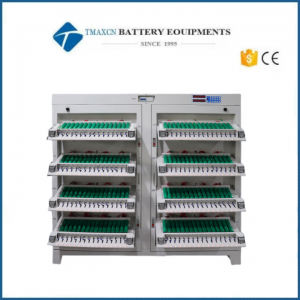 256 Channel 5V 10A Lithium Cell Tester with Horizontal Tray and Energy Regenative Function
256 Channel 5V 10A Lithium Cell Tester with Horizontal Tray and Energy Regenative Function
-
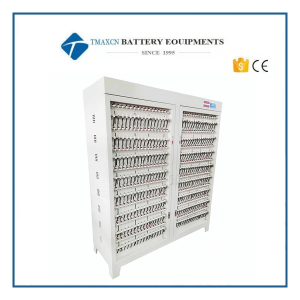 5V 3A 5A 6A 256 or 512 Channel Cylindrical Battery Formation Machine Cell Grading Machine
5V 3A 5A 6A 256 or 512 Channel Cylindrical Battery Formation Machine Cell Grading Machine
-
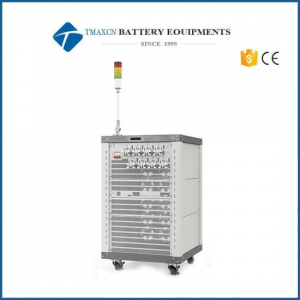 5V60A 8 Channel Battery Tester for Prismatic Cell
5V60A 8 Channel Battery Tester for Prismatic Cell
-
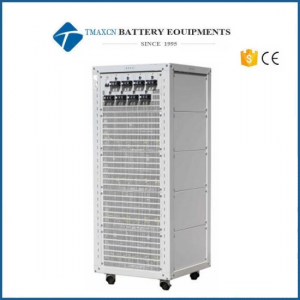 5V200A 8 Channel Battery Tester for Prismatic Cell
5V200A 8 Channel Battery Tester for Prismatic Cell
-
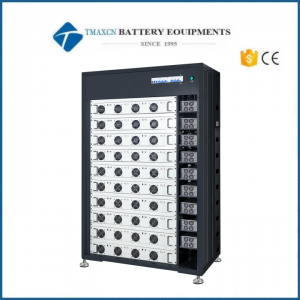 Energy Regenerative Type Battery Pack Aging Machine
Energy Regenerative Type Battery Pack Aging Machine
-
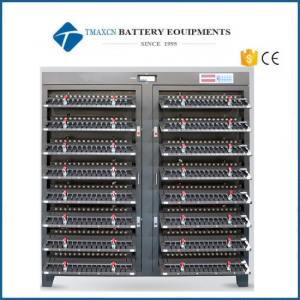 Sodium Ion Battery 512 Channel Formation And Grading Tester
Sodium Ion Battery 512 Channel Formation And Grading Tester
-
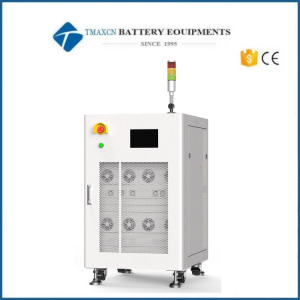 5V 300A Battery Module Tester Aging Machine
5V 300A Battery Module Tester Aging Machine
-
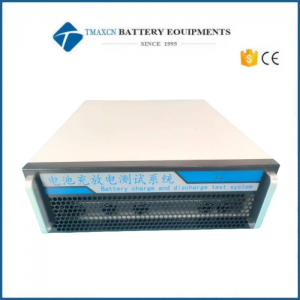 100V 30A 2CH Battery Charge and Discharge Testing Machine
100V 30A 2CH Battery Charge and Discharge Testing Machine
100V 30A 2CH Battery Charge and Discharge Testing Machine
-
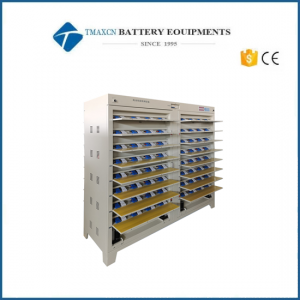 5V10A Solid-State Battery Tester Charge And Discharge Machine
5V10A Solid-State Battery Tester Charge And Discharge Machine
 English▼
English▼




 +86 13174506016
+86 13174506016 David@tmaxcn.com
David@tmaxcn.com

